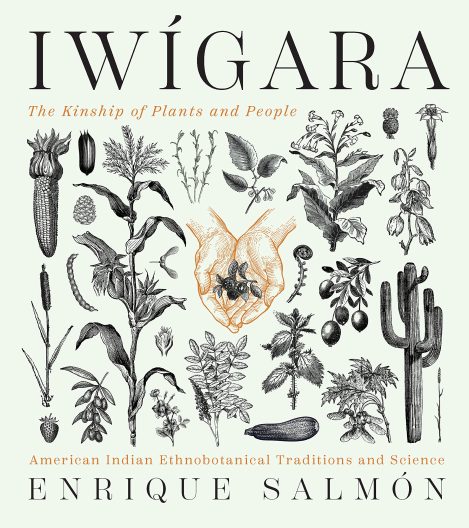 The earliest gardeners in North America were not European settlers but the peoples of the indigenous nations, especially in our region. “All native peoples of the West Coast engaged in some form of complex and sophisticated ‘gardening’ of their homelands.”
The earliest gardeners in North America were not European settlers but the peoples of the indigenous nations, especially in our region. “All native peoples of the West Coast engaged in some form of complex and sophisticated ‘gardening’ of their homelands.”
This observation is by Enrique Salmón, the author of a new book on American Indian ethnobotanical traditions. The book’s title tells part of the story. “Iwígara” (i-WEE-jah-rah) is the concept that humans are no greater than other forms of life in the natural world, including both plants and animals.
Ethnobotany, the study of the use of plants by human cultures, is an important way to understand different civilizations. Sadly, much of the existing literature can bog down in academic minutiae. Not so with “Iwígara” and Salmón’s excellent story-telling! This is a lively and thoroughly readable account of eighty plants significant to the indigenous nations of North America, told using delightful legends and the common practices that have bonded peoples and the plants of their local landscape.
Salmón is an accomplished scientist and an active collaborator with others in his field and he used that network to help determine the plants to include. He also brings a more personal viewpoint. As a member of the Rarámuri (rah-RAH-mer-ree) nation of northwestern Mexico, he learned the plant traditions from his mother, grandmother and other family members “who were living libraries of indigenous plant knowledge that has been collected, revised, and tested for millennia.”
An example is the entry on cedar. “Native peoples in the Pacific Northwest tell a story about a good man who gave unceasingly to his community.” After his death, “the Creator, so impressed with the life this man had led, decided that a great useful tree would grow from the man’s burial site.” According to this legend, this was the first western red cedar (Thuja plicata).
Indeed, this is a useful tree to many regional cultures for buildings, canoes, tools, clothing, and medicines. Throughout “Iwígara,” well-chosen photographs, both old and new, enhance the stories. “Cedar” is highlighted by an impressive 1914 photograph of Kwakiutl cedar mask dancers.
Published in Garden Notes: Northwest Horticultural Society, Summer 2021